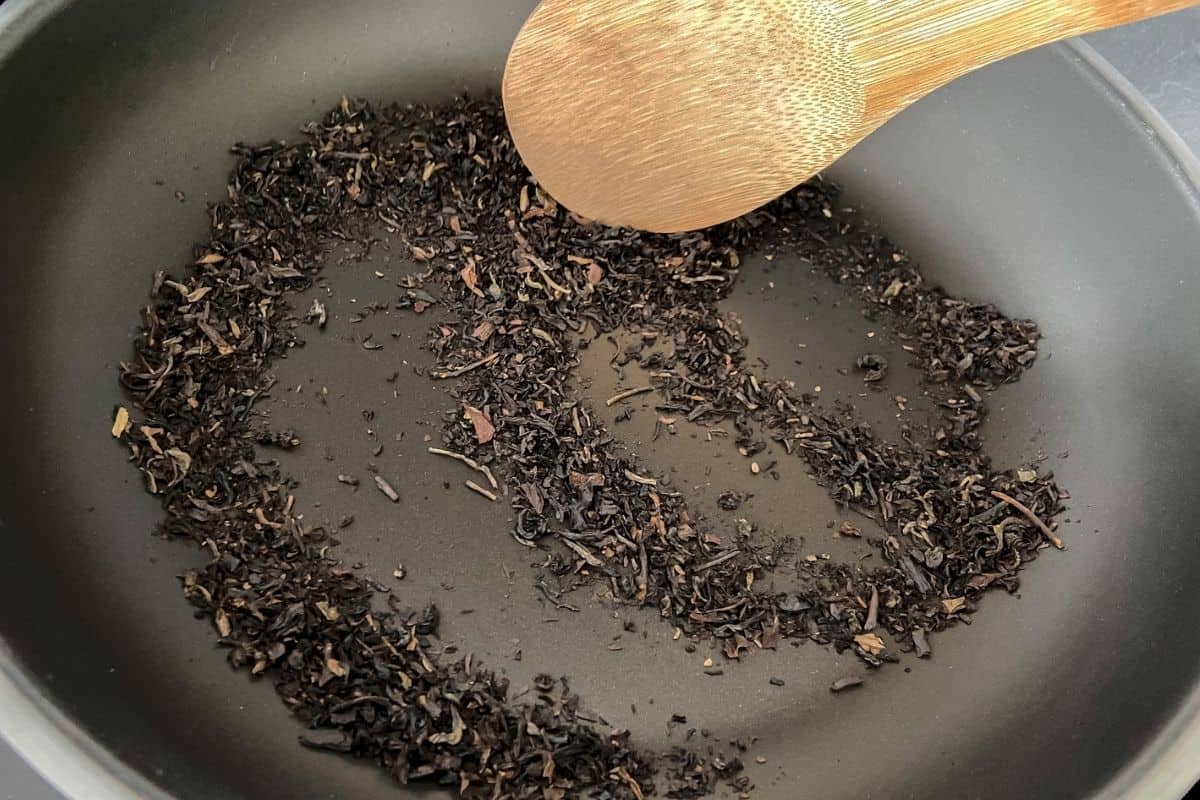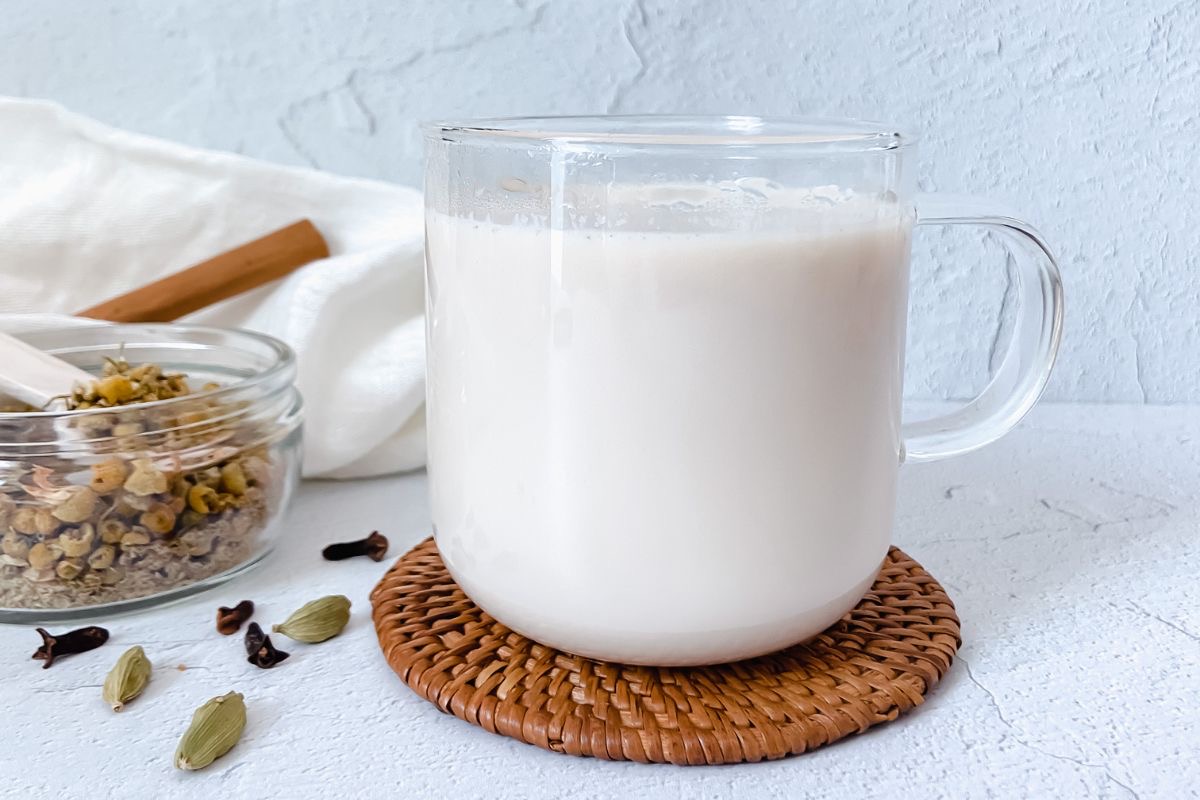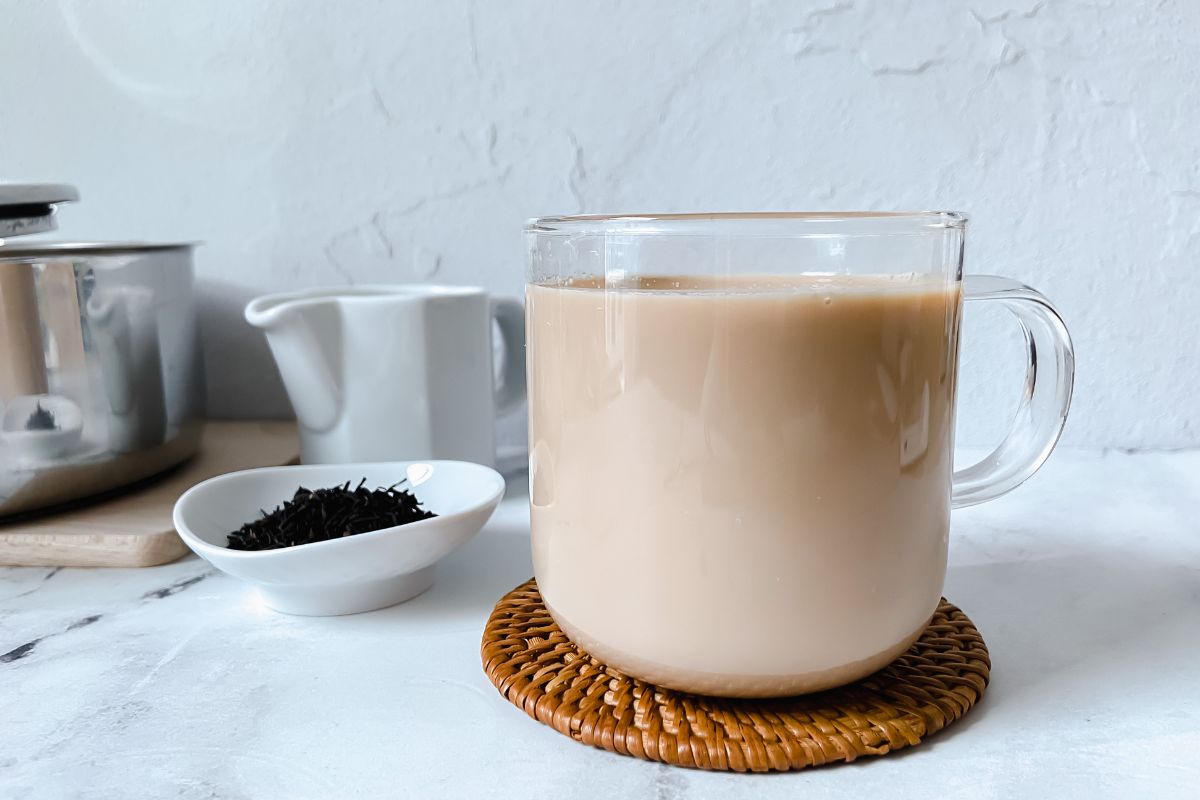Can you make hojicha powder at home with a regular blender?
Here is what happened when I tried to make hojicha powder from tea leaves

If you’re a fan of hojicha tea, you may already know that you can roast your own hojicha quite easily.
So maybe you are also wondering if it’s possible to make your own hojicha powder at home.
I asked myself the same question but as I couldn’t find any answers on the internet, I just experimented.
In this blog post, you’ll be able to see the results when making hojicha powder using a regular blender.
I know how valuable your time is, so I’ll be upfront: this is not a post on how to make hojicha powder, but rather a post showing how I kind of failed, what I learned afterwards and why I’m still pleased with the results (even when I didn’t get hojicha powder).
I hope this article helps you decide if making hojicha powder from scratch is for you!
What is hojicha powder?
Hojicha is Japanese roasted green tea.
The roasting process gives this tea a very pleasant smell and flavor.
It also makes its caffeine content considerable lower.
For these reasons, this Japanese tea is becoming increasingly popular as an ingredient to many beverages and desserts.

To make it more convenient for some recipes, hojicha is also available in powder form.
You can roast green tea at home with very good results, so, if you are a DIY type, perhaps you have considered making your own hojicha powder…
Well, it turns out, there is not much information online about this.
So, to answer the question: “can you make hojicha powder at home?” I tried making my own hojicha powder using a regular blender (the one that came with my handmixer set) and thought you might find the results interesting!
Spoiler: unfortunately the powder doesn’t get very fine.
And still, in my opinion, it may be worth it.
RELATED:
Making hojicha powder at home with a regular blender
We try to stay as minimalist as possible when it comes to kitchen equipment.
So, it was important that we don’t have to buy any new appliances to make our own powdered hojicha.
This is why I used the chopper attachment that came with my Braun handmixer set (which has served us very well to make breadcrumbs and smoothies).
Then I followed these steps:
Time needed: 15 minutes
How to make hojicha powder at home
- Make hojicha
Roast some green tea leaves following this hojicha recipe

- Let the tea cool
Allow the hojicha leaves to cool down for a few minutes

- Blend
Placed the roasted tea leaves in the blender and switch it on for some seconds several times (about one minute in total)

The results weren’t as I hoped and I ended up with chopped hojicha that looked like tea fragments from tea bags:

To see if putting the coarsely grounded tea through a fine-mesh sieve would make it more powder-like, I sieved it 2 times.
I also added our favorite sugar alternative, eritriol, to find out if adding more powder would help.
We used the tea/“sugar“ proportions of 2 Tbsp. eritriol per 15 gr. of hojicha:

The powder got finer, but still, it wasn’t at all what you would expect from a store-bought hojicha powder.
As you can see in the picture below, it also remained grainy even after using a mortar and pestle.
Also, the sweetener didn’t blend perfectly with the tea powder:

So in conclusion, you can’t get hojicha powder at home with a regular blender; you’ll get finely chopped hojicha instead.
Some time after making this experiment, I learned that hojicha is often ground in a similar way as matcha powder: is a special stone miller that grinds the tea into really fine micro-powder.
You can see an example of matcha grinding in the video bellow.
No wonder I didn’t get the same results with a blender!
What to do with chopped hojicha
One of the things I wanted to do with my homemade hojicha powder was milk tea without steeping (similarly to what you can do with matcha).
Well, as I’ve learned, I was extremely naive in thinking I can ground loose leaf tea into such an ultrafine powder at home.
But since I already blended the tea, I mixed my coarse tea powder with milk anyway to see how it’d turn out.
Powdered tea has less volume than whole leaves, so I only used half teaspoon of my ready-to-use hojicha drink “powder” per cup.
At first I only added a small amount of milk (I used almond milk this time), so I could stir more easily.
And then, after confirming that this tea “powder” wouldn’t dissolve in liquid, filled the rest of the cup.
The good thing is, the resulting hojicha latte tasted and smelled very good!
But there were tea particles that ended at the bottom of the mug, so this tea latte may not be for everyone:

Despite failing in many points, the homemade hojicha powder/chopped tea leaf has a nice size to use in desserts and as topping to many sweet dishes.
Additionally, you can add it as seasoning to savory dishes for a unique flavor profile.
So, although I couldn’t make hojicha powder as I wanted, I am also happy with this texture because it adds an interesting dimension to sweets and meals.
Common questions about hojicha powder
There are many brands of hojicha powder on the market, so how do you choose a good one?
When buying hojicha powder, it’s important to consider the quality of the leaves.
Look for brands that use high-quality, organic tea leaves whenever possible.
On the other side, the color of the powder isn’t a quality indicator.
Deep roasted hojicha or hojicha leaves that come from some sorts of teas produce a darker powder, but both browner or light-colored hojicha powder can be good.
It depends on your taste.
First of all, their appearance is very different: hojicha powder is brownish and matcha has a vivid green color due to its high chlorophyll content.
But more importantly, matcha comes from high-grade tea leaves that are shade-grown, while hojicha powder is made from roasted tea.
The exact caffeine content in hojicha powder is difficult to determine, as it depends on numerous factors like variety, growing conditions, processing, roasting grade and even harvest season of the tea leaves.
But generally speaking, hojicha has a lower caffeine content than matcha or other green teas because it’s roasted.
A standard cup of hojicha has around 8mg caffeine.
Beyond using hojicha powder to make delicious teas, lattes and other beverages, you can also use it in numerous recipes to add flavor and aroma.
In baking: hojicha goes well in many recipes that call for cocoa, such as brownies and baked treats. It can also be sprinkled on top of desserts like ice cream or whipped cream.
In savory dishes: hojicha can be used in any recipe where you want to add an umami twist.
Hojicha.co has lots of awesome recipes that use hojicha powder.
Looking for recipes that use hojicha powder or hojicha leaves?
Here I’ve gathered a variety of delicious dessert recipes that use hojicha.







Your experiment with hojicha powder was very helpful and saved me lots of trouble, thanks!
I was also truly impressed by the 50+ tea list; in my opinion, this blog is a great place to get information to the point about tea.
I am very happy my “failed” experiment with hojicha “powder” was useful to you. Thank you for your kind words!